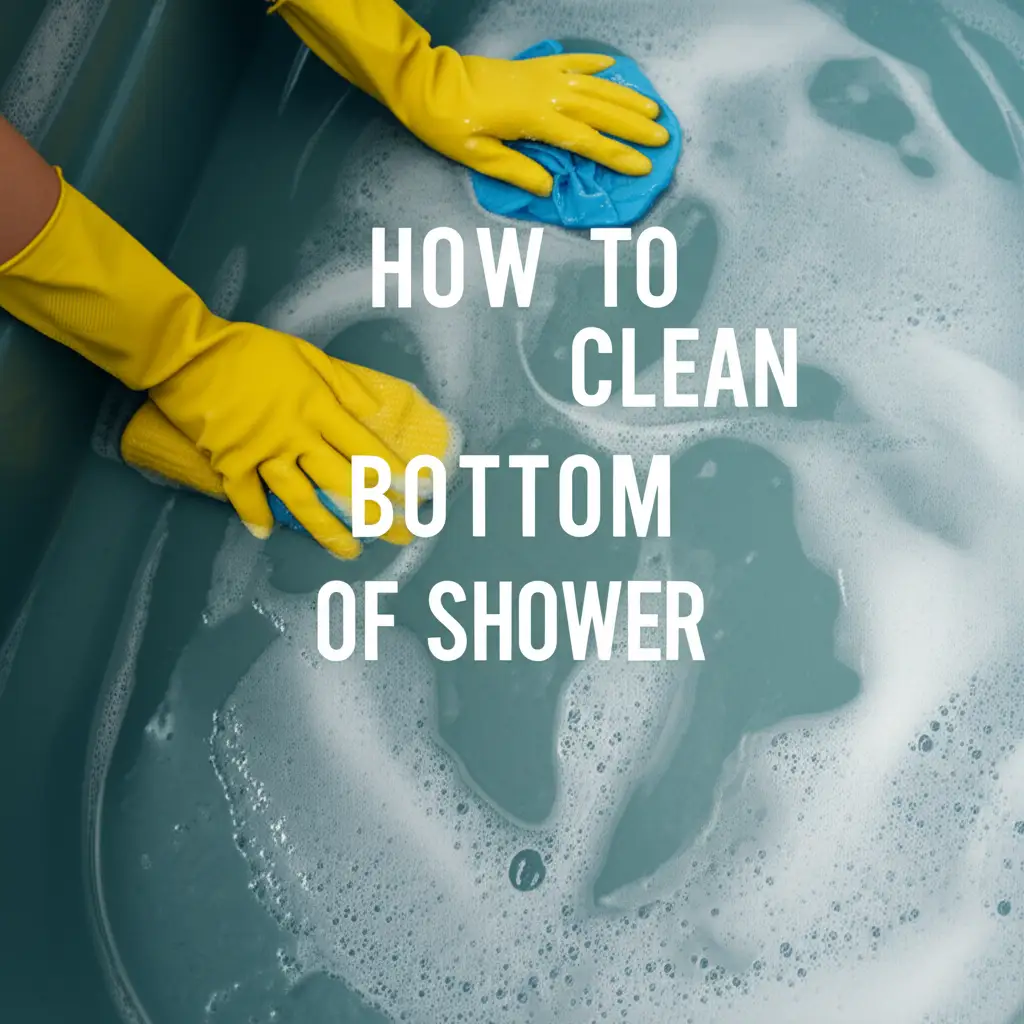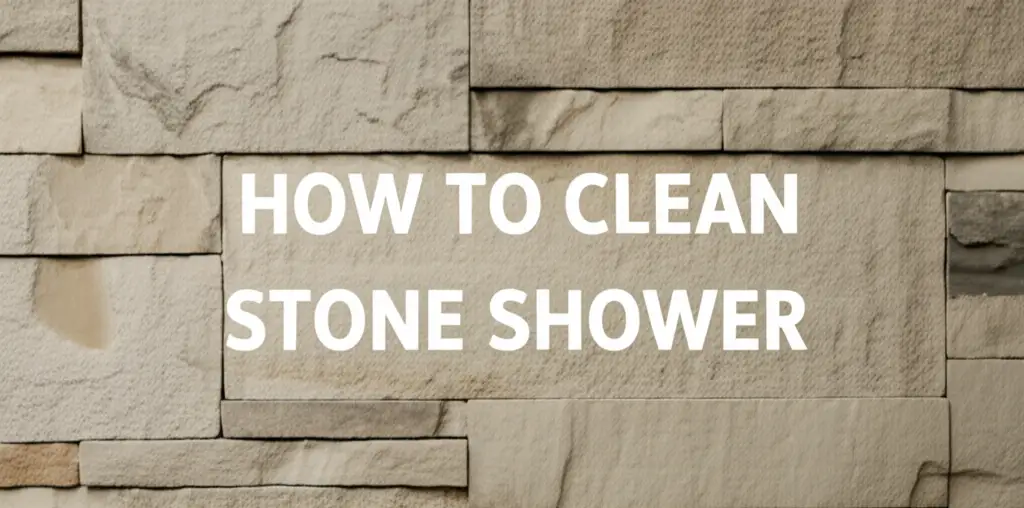· Bathroom Cleaning · 19 min read
How To Clean Shower Door

Effortless Shine: How to Clean Shower Doors Perfectly
Do your shower doors look cloudy? Are they covered in unsightly streaks or stubborn white spots? I know the feeling. A dingy shower door can make your whole bathroom feel less clean, no matter how much you scrub the rest of the space. Getting them truly clean often feels like a challenge, with many people giving up on achieving that sparkling, clear look.
You are not alone in facing this common household cleaning issue. Hard water minerals, soap scum, and body oils build up quickly, creating a hazy film. This article gives you simple, effective ways to tackle these common problems. We will cover everything from daily habits to deep cleaning methods. You will learn the best tools and cleaners to make your shower doors shine. Get ready to transform your bathroom with clear, clean shower doors.
Takeaway
- Wipe down shower doors daily with a squeegee or microfiber cloth after each use.
- Regularly apply natural or commercial cleaners to prevent heavy buildup.
- Use specific methods to tackle stubborn hard water spots and soap scum.
- Maintain good ventilation to reduce moisture and mold growth.
How to clean shower door effectively? To clean a shower door effectively, wipe it daily with a squeegee. For deeper cleaning, spray a vinegar solution or a commercial glass cleaner. Scrub with a non-abrasive sponge, then rinse well. Dry the door completely with a microfiber cloth for a streak-free finish.
Understanding Shower Door Stains: Soap Scum vs. Hard Water
Shower doors often show two main types of stains. These are soap scum and hard water deposits. Knowing the difference helps you choose the right cleaning method. Each stain type needs a specific approach for best results. We will look at what causes each problem.
Soap scum forms when soap residue mixes with minerals in water and body oils. It appears as a white, grayish, or yellowish film. This film feels greasy or waxy to the touch. It builds up quickly on surfaces that get wet often, like shower doors. Regular bar soap often leaves more soap scum than liquid body wash. The fatty acids in soap react with minerals to create this sticky residue.
Hard water deposits, or limescale, come from dissolved minerals in your water supply. These minerals include calcium and magnesium. When water evaporates, it leaves these minerals behind. They appear as white, chalky spots or streaks. Over time, these spots can become very hard and difficult to remove. Hard water stains are common in areas with a high mineral content in their tap water. These stains feel rough or gritty.
You might have both soap scum and hard water stains on your shower door. Many homes face both issues. Soap scum tends to be more widespread and filmy. Hard water stains are often localized to specific spots where water drips or pools. Identifying the primary stain helps you pick the right cleaner. Acidic cleaners work well for hard water. Mild bases or general cleaners work for soap scum.
Essential Tools and Supplies for Cleaning Shower Doors
Having the right tools makes cleaning shower doors much easier. You do not need many items, but the right ones make a big difference. Gather these items before you start cleaning. This ensures a smooth and effective cleaning process. I always keep these on hand for quick clean-ups.
First, you need a good quality squeegee. A squeegee is key for daily maintenance. It helps remove water from the glass after each shower. This simple tool prevents most hard water spots from forming. Look for one with a comfortable handle and a sharp rubber blade. I find that an 8-10 inch blade works well for most shower doors.
Next, get several microfiber cloths. These cloths are excellent for wiping, drying, and polishing. They are soft and absorbent. Microfiber cloths do not leave lint or streaks on glass surfaces. Keep a few clean ones ready. One cloth can be for applying cleaner, another for rinsing, and a third for final drying.
You also need a spray bottle. This is perfect for mixing homemade cleaning solutions, like vinegar and water. A sturdy spray bottle helps you apply the cleaner evenly across the entire shower door. Make sure the spray setting is adjustable. This allows for a fine mist or a direct stream.
Consider a non-abrasive sponge or soft brush. These are useful for scrubbing stubborn stains without scratching the glass. Avoid abrasive scrubbers, steel wool, or harsh pads. These can damage the glass surface or its protective coatings. A soft-bristled scrub brush can also help with hard-to-reach areas.
Lastly, do not forget protective gloves. Cleaning products, even natural ones, can irritate your skin. Gloves protect your hands from chemicals and keep them clean. Safety goggles might also be a good idea, especially if you are using strong cleaners or working with sprays. Having these supplies ready saves time. It makes your cleaning routine more efficient.
Natural Solutions for a Spotless Shower Door
Many people prefer natural cleaning methods. These options use common household items. They are safe for your family and pets. They also reduce chemical exposure in your home. I often use these natural solutions myself, and they truly work wonders.
Vinegar Power for Shower Doors
White vinegar is a powerful natural cleaner. Its acidic nature helps dissolve hard water stains and soap scum. It is also a natural disinfectant. You can create an effective cleaning spray with just two ingredients. This solution is easy to make and use.
To prepare the solution, mix equal parts white vinegar and distilled water in a spray bottle. For example, use one cup of vinegar and one cup of water. You can warm the vinegar slightly before mixing it. Warm vinegar can be more effective on tough buildup. Spray the entire shower door surface with this mixture. Make sure to cover all stained areas thoroughly. Let the solution sit for 15-30 minutes. For very heavy stains, you can let it sit longer, even up to an hour. The acid in the vinegar needs time to break down the mineral deposits and soap scum. After soaking, scrub the door with a non-abrasive sponge or microfiber cloth. Rinse the door completely with clean water. Finally, dry it with a clean, dry microfiber cloth or squeegee for a streak-free finish. Repeat if necessary for stubborn spots. This method is also great for maintaining overall shower cleanliness. You can learn more about general vinegar cleaning tips at how to clean shower with vinegar.
Baking Soda Paste for Tough Stains
Baking soda is another versatile natural cleaner. It is a mild abrasive that can scrub away grime without scratching. It works well on tough soap scum and light hard water stains. Baking soda is also a natural deodorizer. I love how it lifts away dirt gently.
To use baking soda, make a paste. Mix baking soda with a small amount of water. You want a thick consistency, like toothpaste. Apply this paste directly onto stubborn soap scum or hard water spots. Use your fingers or a soft cloth to spread it. Let the paste sit on the stains for 10-15 minutes. This gives the baking soda time to work its magic. Then, gently scrub the area with a non-abrasive sponge or brush. You will notice the grime lifting away. Rinse the shower door thoroughly with warm water. Ensure all baking soda residue is gone. Dry with a clean microfiber cloth for a sparkling result. Baking soda works effectively on its own or in combination with vinegar. For more general applications of baking soda in your bathroom, check out how to clean shower with baking soda.
Commercial Cleaners for Stubborn Shower Door Grime
Sometimes, natural solutions are not enough. Very tough stains or long-neglected shower doors might need a stronger approach. Commercial cleaners offer powerful solutions for deep grime. These products are formulated to tackle specific types of stains. Remember to always read product labels. Follow the safety instructions carefully.
Choosing the Right Commercial Cleaner
The market offers many types of commercial shower door cleaners. Some are specialized for glass, while others are multi-surface bathroom cleaners. Look for products designed to remove “soap scum” or “hard water stains.” Many cleaners combine these properties. Glass cleaners often contain ammonia or alcohol. These chemicals help achieve a streak-free shine. However, ammonia-based cleaners can be harsh. They may not be suitable for all types of shower doors or surrounding materials.
For heavy hard water buildup, look for acidic cleaners. These often list ingredients like phosphoric acid or hydrochloric acid. These acids are effective at dissolving mineral deposits. For soap scum, products with detergents or solvents work well. Some cleaners also contain chelating agents. These agents bind to minerals and prevent them from redepositing. Always check if the cleaner is safe for your specific shower door material. Most glass doors are fine, but plastic or acrylic can sometimes react poorly with certain chemicals.
Safety Tips for Commercial Products
Using commercial cleaners requires caution. They contain chemicals that can be harmful if misused. Always work in a well-ventilated area. Open windows or turn on your bathroom fan. This helps disperse fumes. Wear rubber gloves to protect your skin from irritation. Some stronger cleaners might require eye protection.
Never mix different commercial cleaning products. Especially avoid mixing ammonia-based cleaners with bleach. This combination creates highly toxic fumes. These fumes can cause severe respiratory problems or even be fatal. Apply cleaners directly to the shower door. Avoid overspray onto other surfaces, especially porous ones like stone or grout. Rinse the door thoroughly after cleaning. Ensure no residue remains. Store commercial cleaners out of reach of children and pets. Proper use ensures safety and effective cleaning.
Step-by-Step Deep Cleaning Your Shower Door
A deep clean transforms your shower door from dull to dazzling. This process tackles built-up grime that daily wipes might miss. I recommend doing a deep clean regularly, depending on your water hardness and shower usage. This step-by-step guide helps you achieve a truly sparkling result.
Preparing for a Deep Clean
Before you begin, remove any items from the shower. Take out bottles of shampoo, conditioner, and soap. This clears the area, allowing full access to the door. Ventilate the bathroom. Open a window or turn on the exhaust fan. This helps clear fumes from cleaners. It also dries out the air, which makes cleaning easier. Gather all your tools and cleaners beforehand. This includes your chosen cleaner (natural or commercial), sponges, microfiber cloths, and a squeegee. Consider cleaning other parts of your shower area at the same time. For example, you might want to clean the shower door tracks or refresh the grout in your shower for a complete refresh.
The Cleaning Process
Start by wetting the entire shower door with warm water. This helps loosen some surface dirt. It also prepares the surface for the cleaner. Apply your chosen cleaning solution generously. If using a spray, cover the entire glass. For a paste, spread it evenly over stained areas. Let the cleaner sit for the recommended time. This ‘dwell time’ allows the cleaner to break down soap scum and hard water deposits. For light grime, 5-10 minutes might be enough. For heavy buildup, you may need 30 minutes or more. Always check the cleaner’s instructions.
Once the cleaner has had time to work, begin scrubbing. Use a non-abrasive sponge or microfiber cloth. Work in small sections, applying gentle pressure. For stubborn spots, use a bit more pressure. You can also use a soft-bristled brush for corners and edges. Avoid scrubbing too hard, especially on glass. If the first application does not remove all stains, apply more cleaner and repeat the soaking and scrubbing steps. Do not rush this part.
Rinsing and Drying for Sparkle
Rinsing is a crucial step. It removes all cleaner residue and loosened grime. Use clean, warm water to thoroughly rinse the entire shower door. You can use a spray nozzle if your shower has one. Ensure every bit of soap or cleaner is washed away. Any remaining residue can lead to new streaks.
Immediately after rinsing, dry the shower door. This is where the squeegee truly shines. Start at the top of the door and make overlapping strokes downwards. Wipe the squeegee blade clean after each stroke. This prevents streaks. For corners and edges the squeegee cannot reach, use a clean, dry microfiber cloth. Buff the entire door with a fresh microfiber cloth. This final buffing helps remove any tiny water droplets or remaining streaks. You will be left with a sparkling, crystal-clear shower door.
Daily Habits for Maintaining Clean Shower Doors
Cleaning your shower door once is a good start. But maintaining that sparkle requires consistent effort. Small daily habits can prevent major buildup. This saves you from tedious deep cleaning later. I find these simple steps make a huge difference in keeping my bathroom looking fresh.
The most important habit is to squeegee your shower door after every use. A squeegee removes water droplets from the glass surface. This prevents minerals from evaporating and leaving hard water spots. It also stops soap residue from drying and forming scum. It takes only about 10-15 seconds to squeegee the entire door. Hang the squeegee inside the shower or nearby for easy access. Make it a routine for everyone in the household.
Another great habit is a quick wipe down. If you do not have a squeegee, or even if you do, use a clean microfiber cloth. Wipe the shower door down after each shower. This absorbs excess moisture. It also removes any immediate soap splatters. Keep a dedicated cloth hanging inside or near the shower. Wring it out well after use and let it air dry.
Consider keeping a small spray bottle with a daily shower cleaner solution. You can use a diluted vinegar and water mix or a commercial daily shower spray. After showering, spray the doors lightly. Do not rinse the product off. These daily sprays are designed to prevent soap scum and hard water buildup. They form a protective barrier. Make sure to choose a product that is safe for your specific shower door material.
Good ventilation is also vital. Always run the exhaust fan during and after your shower. If you do not have a fan, open a window. This reduces humidity in the bathroom. Lower humidity means less condensation on the shower door. Less moisture also slows down mold and mildew growth. Air circulation helps the shower door dry faster. This further prevents water spots and soap scum from forming. Consistent effort keeps your shower doors looking clear and bright.
Troubleshooting Common Shower Door Issues
Sometimes, regular cleaning is not enough. Shower doors can develop specific problems over time. These include stubborn mold or extreme hard water buildup. Do not worry; there are solutions for these tougher challenges. I have dealt with these issues myself. I know how frustrating they can be.
Tackling Mold and Mildew
Mold and mildew thrive in damp, warm environments. They often appear as black, green, or pinkish spots along the edges of the shower door, especially near the frame or sealant. These fungi not only look bad but can also affect air quality. Mold needs immediate attention.
To remove mold, create a solution of one part bleach to two parts water. Always wear gloves and ensure good ventilation. Spray the moldy areas with this solution. Let it sit for 10-15 minutes. The bleach will kill the mold spores and break down the stains. For heavier mold, you can apply a bleach-based cleaner directly. Scrub with a stiff brush or an old toothbrush. This helps get into tight corners. Rinse thoroughly with water. If you prefer a non-bleach option, white vinegar can also kill mold. Spray undiluted vinegar on moldy areas. Let it sit for an hour. Then scrub and rinse. For more specific guidance on bathroom mold, you can check how to clean mold in shower. Always make sure to dry the area completely afterward.
Removing Severe Hard Water Buildup
Extreme hard water buildup can look like a thick, cloudy film or crust. It feels rough to the touch. Standard cleaning methods might not work on this. You need a stronger acid to dissolve these mineral deposits.
One effective method involves using lemon juice or a stronger vinegar solution. Cut a lemon in half. Dip the cut side in salt. Use the lemon half to scrub the hard water spots directly. The acid in the lemon and the abrasive salt work together. For a stronger vinegar attack, heat white vinegar in a microwave. Do not boil it. Soak paper towels in the warm vinegar. Press these paper towels onto the hard water-stained areas. Let them sit for several hours, or even overnight. The prolonged contact with warm acid helps dissolve the minerals. Keep the paper towels wet by re-spraying with vinegar. After soaking, remove the paper towels. Scrub the area with a non-abrasive pad. Rinse thoroughly and dry. You might need to repeat this process for very severe buildup. Commercial hard water removers are also available. These contain stronger acids designed for this specific problem. Always follow product instructions carefully.
Specific Shower Door Types and Care
Not all shower doors are the same. Different materials need different care. Understanding your shower door’s material helps you choose safe and effective cleaning methods. This ensures longevity and maintains its appearance.
Cleaning Glass Shower Doors
Most modern shower doors are made of tempered glass. Glass is durable, but it is prone to showing water spots and soap scum. The methods discussed earlier are mostly for glass. This includes vinegar solutions, baking soda pastes, and commercial glass cleaners. Always use non-abrasive tools on glass. A squeegee is your best friend for glass doors. After cleaning, you can apply a glass sealant or a car wax product. This creates a protective layer. It makes the glass hydrophobic, meaning water beads up and rolls off easily. This reduces the frequency of deep cleaning. It also makes future cleaning much simpler.
Caring for Plastic and Acrylic Shower Doors
Some older homes or budget-friendly showers have plastic or acrylic doors. These materials are lighter and less prone to shattering. However, they are more susceptible to scratching. They can also become cloudy or yellow over time. Avoid harsh chemicals, abrasive cleaners, or stiff brushes on plastic and acrylic.
For cleaning plastic shower doors, use mild soap and warm water. Dish soap mixed with water works well. Spray the solution onto the door. Wipe it gently with a soft microfiber cloth or sponge. Rinse thoroughly. For tough stains, a paste of baking soda and water can be used. Rub it gently, then rinse. Never use ammonia-based cleaners, as they can cause acrylic to become brittle and cloudy. Alcohol-based cleaners can also damage these surfaces. For specific guidance on acrylic shower cleaning, always refer to the manufacturer’s recommendations. Regular gentle cleaning is key to keeping plastic and acrylic doors clear.
Maintaining Frosted or Textured Shower Doors
Frosted or textured shower doors offer privacy. They also hide minor smudges better than clear glass. However, their uneven surfaces can trap more dirt and soap scum. Cleaning these doors requires a bit more effort to get into the crevices.
Use a soft-bristled brush or an old toothbrush for textured areas. This helps agitate and remove grime from the grooves. Apply your cleaner (vinegar solution or mild commercial cleaner) as usual. Let it sit for a good amount of time. Then, scrub with the brush, working the bristles into the texture. Rinse thoroughly with a strong spray of water. Ensure all cleaner and debris wash out of the texture. Dry as best you can with a microfiber cloth. The texture will prevent a perfectly streak-free dry. Regular cleaning helps prevent heavy buildup in these hard-to-reach areas.
Frequently Asked Questions
How often should I clean my shower door?
You should squeegee or wipe your shower door after every use. This daily habit prevents major buildup. For a deeper clean, aim for once a week. This weekly cleaning removes any developing soap scum or light hard water spots. A thorough deep clean is recommended monthly or every few months, depending on your water quality and usage.
What removes tough hard water stains from shower glass?
To remove tough hard water stains, use an acidic cleaner. White vinegar is effective; spray it undiluted and let it sit for at least 30 minutes before scrubbing. For very stubborn stains, try soaking paper towels in hot vinegar and adhering them to the glass overnight. Commercial hard water removers containing stronger acids also work well.
Can I use dish soap to clean my shower door?
Yes, you can use dish soap to clean your shower door, especially for soap scum. Dish soap is a degreaser. Mix a few drops of dish soap with warm water in a spray bottle. Spray the door, scrub with a soft sponge, then rinse thoroughly. It is a mild and effective option for general cleaning.
How do I prevent water spots on my shower door?
Prevent water spots by removing moisture immediately after showering. Use a squeegee to wipe down the door after every use. A quick wipe with a microfiber cloth also helps. Consider applying a water repellent or a glass sealant product to the door. This causes water to bead up and roll off, reducing spots.
Is it safe to use bleach on my shower door?
Bleach is safe for glass shower doors. It works well for killing mold and mildew. Always dilute bleach with water and ensure good ventilation. Never mix bleach with ammonia-based cleaners, as this creates toxic fumes. Avoid using bleach on porous materials like grout or natural stone unless specifically recommended.
What causes the cloudy film on my shower door?
The cloudy film on your shower door is typically caused by a combination of soap scum and hard water mineral deposits. Soap scum forms from the reaction of soap with water minerals and body oils. Hard water leaves behind dissolved minerals like calcium and magnesium as water evaporates, creating a hazy buildup.
Conclusion
Cleaning your shower door does not have to be a daunting task. You now have simple, effective methods to make your shower door sparkle. From understanding the types of stains to choosing the right tools and cleaners, you are well-equipped. Remember that consistent effort makes the biggest difference.
Embrace the power of daily squeegeeing or wiping. This small habit saves you from bigger cleaning jobs later. When it is time for a deeper clean, rely on natural solutions like vinegar and baking soda. For tougher stains, appropriate commercial cleaners offer powerful results. No matter your challenge, clear, gleaming shower doors are within reach. Take these steps to transform your bathroom. Enjoy a brighter, cleaner space every day.
- shower door cleaning
- hard water stains
- soap scum removal
- glass cleaning
- natural cleaners
- vinegar cleaning
- shower maintenance




